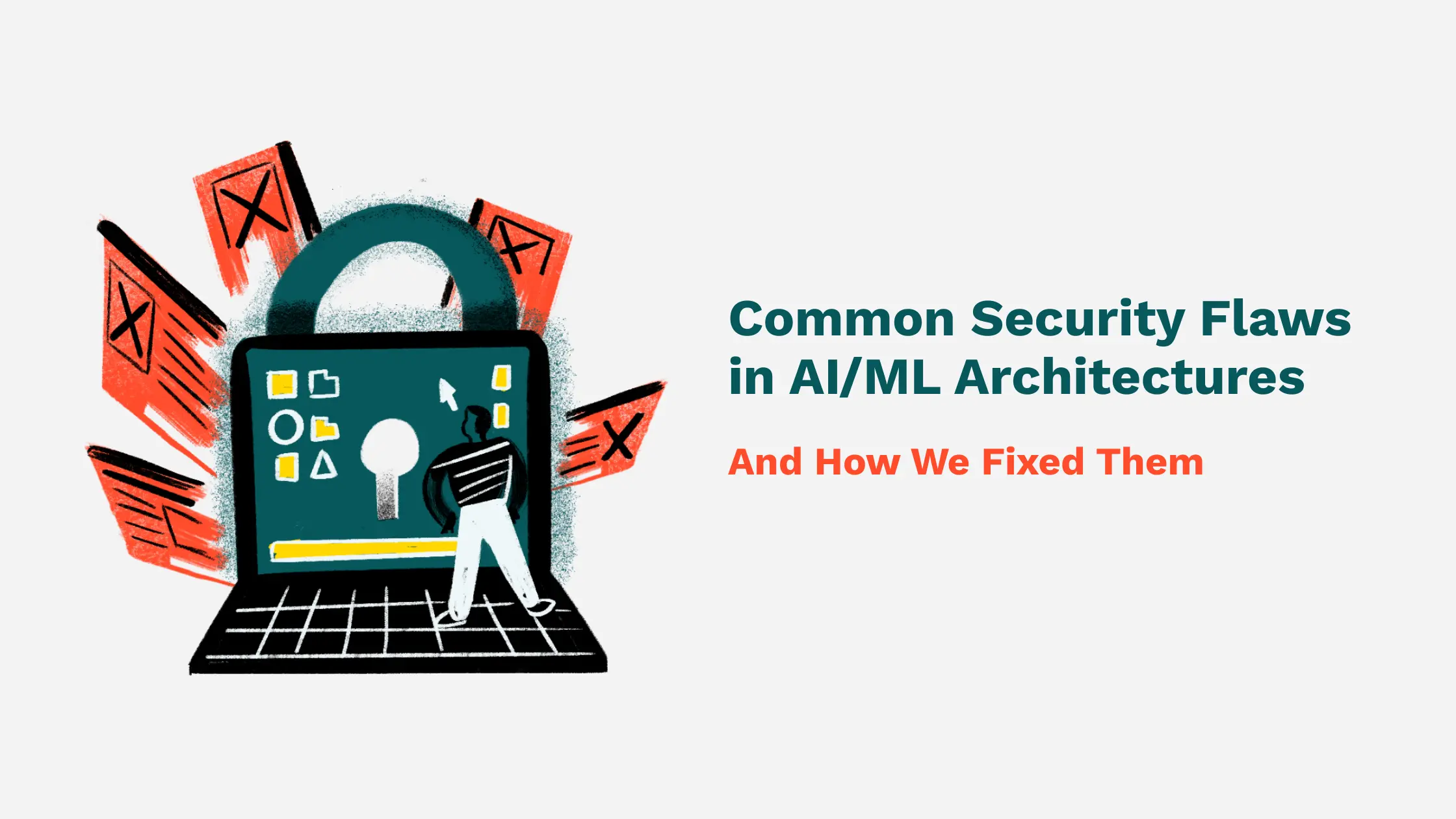
Artificial intelligence and machine learning are transforming how organizations analyze data, automate decisions, and interact with users. Yet, beneath these innovations lies a growing surface of risk.
AI architectures often evolve faster than their security controls, leaving gaps that adversaries can exploit. Our AI/ML architecture assessments consistently reveal recurring vulnerabilities across organizations of all sizes.
These flaws stem from predictable oversights in access management, data protection, dependency integrity, and model exposure.
In this case study round-up, we share anonymized findings from real-world engagements, and how targeted remediation restored security and compliance.
A global financial analytics firm deployed a custom large language model (LLM) pipeline across AWS and Azure to automate portfolio summaries.
The infrastructure was complex: data ingestion, model training, and inference occurred across multiple managed services and container clusters.
The client’s internal DevOps team had prioritized rapid integration over least-privilege design, which granted broad Identity and Access Management (IAM) permissions to facilitate cross-service automation.
During ioSENTRIX's assessment, privilege analysis revealed that several service accounts possessed over-permissive IAM roles, including wildcard (“*”) permissions on storage buckets, key management services, and container registries.
In one instance, an AI training node in Azure Kubernetes Service (AKS) could access AWS S3 buckets used by unrelated workloads.
This misconfiguration presented a classic lateral movement vector. The lack of separation between dev, test, and production environments further amplified risk, undermining compliance with SOC 2 and ISO 27001 controls.
ioSENTRIX’s architecture review recommended a principle-of-least-privilege redesign using role-based segmentation and identity federation:
After implementation, access pathways were restricted by more than 85%, verified through automated IAM graph analysis.
Subsequent red-team validation confirmed the absence of cross-cloud lateral access paths. Thus, an overexposed architecture was transformed into a policy-driven, auditable access model.
A healthcare technology provider built a self-hosted inference environment for clinical text summarization.
To support fast experimentation, the data science team exposed model endpoints via a simple Flask-based REST API behind a load balancer.
The endpoints accepted JSON payloads containing patient-related text, which was then summarized using fine-tuned transformer models.
ioSENTRIX’s external surface mapping revealed that one inference endpoint was publicly accessible without authentication.
Although it was intended for internal testing, the endpoint exposed sensitive model behavior and personal health information (PHI) in request logs.
Static analysis of deployment manifests confirmed that the API lacked authentication middleware and input validation.
Moreover, logging configuration captured full request bodies for debugging, inadvertently storing PHI in plaintext within S3 logs.
Combined, these flaws represented severe violations of HIPAA and GDPR data protection requirements.
The remediation process involved secure endpoint isolation and data minimization controls:
Post-remediation tests confirmed full compliance with healthcare data handling policies, and endpoint access was restricted to authorized internal applications.
An AI research organization operated distributed training clusters across multiple geographic regions. The setup leveraged object storage for dataset shards and intermediate model weights.
While the organization relied on default cloud encryption options, they had not implemented end-to-end encryption between worker nodes and storage buckets.
During the architecture review, ioSENTRIX engineers performed traffic inspection and found that model parameters were occasionally transmitted in plaintext between worker pods and NFS-mounted storage.
This occurred because inter-node communication bypassed the managed key encryption layer due to legacy configuration scripts.
In addition, encryption keys were being shared via environment variables embedded in deployment YAML files.
ioSENTRIX introduced a zero-trust encryption framework across the training infrastructure:
This layered approach not only secured the communication channel and simplified compliance reporting for research data confidentiality under ISO 27018.
A technology startup integrated several open-source packages to accelerate LLM experimentation including tokenizers, model loaders, and vector database connectors.
Their ML pipeline, orchestrated via Kubeflow, relied heavily on these libraries for pre- and post-processing.
Routine dependency scans conducted by ioSENTRIX identified multiple outdated Python packages with high-severity vulnerabilities (CVSS 8.8+).
One of these packages allowed arbitrary code execution through deserialization attacks when handling untrusted input.
Furthermore, the client’s build pipeline did not include integrity verification for dependency artifacts. As a result, any compromise in the package supply chain could have propagated directly into production workloads.
ioSENTRIX implemented a secure software supply chain framework aligned with NIST SP 800-204D and SLSA (Supply Chain Levels for Software Artifacts):
This hardened the end-to-end model delivery pipeline, reduced unverified dependencies by 94% and ensured that only cryptographically signed artifacts were promoted to production.
A SaaS company offering AI-powered text generation hosted customer-specific models in a shared object store.
Each customer’s model weights were separated by directory but not by encryption context, meaning a misconfigured API call could expose another tenant’s assets.
Forensic simulation showed that with valid credentials for one tenant, an attacker could enumerate object keys for others and breach data isolation.
The root cause was a combination of flat storage namespace design and insufficient access control granularity.
The remediation strategy centered on tenant-aware encryption and logical isolation:
The result was a hardened multitenant model repository architecture that preserved efficiency without sacrificing isolation.
Across these engagements, several recurring themes emerged. Patterns that define the current state of AI/ML security maturity across industries.
Teams prioritize data pipelines and accuracy metrics but overlook IAM policies, dependency hygiene, and secure deployment workflows.
Whether it’s public endpoints, unverified packages, or plaintext logs, defaults intended for development often persist into production environments.
Distributed models amplify trust boundaries. Every API, service account, and data bucket becomes a potential breach point.
ioSENTRIX’s structured architecture review methodology emphasizes layered, systematic hardening such as identity, encryption, dependencies, and deployment, so that security aligns with the AI system’s operational context.
ioSENTRIX’s AI Security Assessment Framework is built on three pillars:
.webp)
The case studies above illustrate that the most common vulnerabilities in AI/ML systems are not exotic exploits, but predictable design flaws: over-permissive access, exposed endpoints, weak encryption, insecure dependencies, and inadequate data isolation.
ioSENTRIX has helped clients across sectors transform vulnerable AI systems into hardened, compliant, and trustworthy infrastructures.
Request an AI Security Assessment or contact the ioSENTRIX team to discuss how we can harden your AI infrastructure against real-world threats.